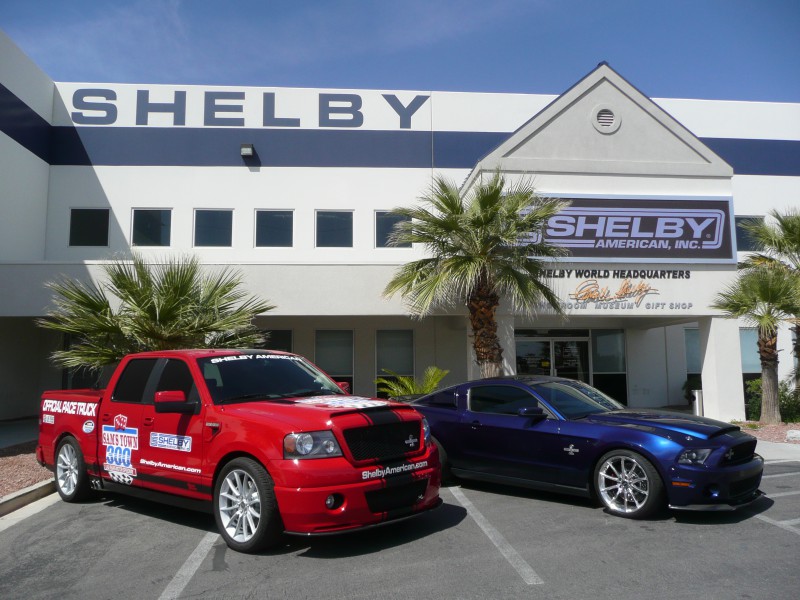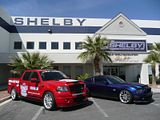
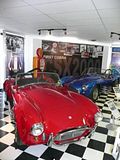
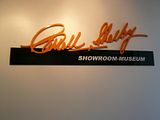 I had done quite a bit of careful research when planning my recent vacation, to make sure that if there were any items of interest to the automotive fan, then I tried to include them in the itinerary. When I arrived in Vegas, and was gathering tourist maps and other info, my eyes homed in on a leaflet for the “Shelby Cafe”. Open from 6am to 2pm, it said. Then, more interestingly, it referred to a Shelby Museum, open during working hours, Monday to Friday. The location? Just by the Vegas NASCAR Motor Speedway, north of the city, right by I-15. Result, as although I was heading off to scenery during the weekend, I would be returning on a Tuesday, and need to check in at the airport by 5pm. It looked possible to visit.When I arrived, I found the Cafe, and was dismayed to find signs saying that it was closed – permanently, from June 10th. There was a small door next door, which bore an “Open” sign, so I went in. I was greeted by someone who asked if I was looking for the Shelby Museum (the camera was probably a give away!), and he directed me to an industrial unit at the end of the site, a couple of hundred yards away. Duly parked up, I went inside. First pleasant surprise: the museum is free. It’s not huge, which is just as well, as I did not have a lot of time, and I failed to take any notes, so the initial report was written from memory. A subsequent visit just happened to coincide with a guided tour, so I learned far more about the history of Shelby, from a guide whose full time job is in the factory which is located behind the museum. I have updated this report accordingly.
I had done quite a bit of careful research when planning my recent vacation, to make sure that if there were any items of interest to the automotive fan, then I tried to include them in the itinerary. When I arrived in Vegas, and was gathering tourist maps and other info, my eyes homed in on a leaflet for the “Shelby Cafe”. Open from 6am to 2pm, it said. Then, more interestingly, it referred to a Shelby Museum, open during working hours, Monday to Friday. The location? Just by the Vegas NASCAR Motor Speedway, north of the city, right by I-15. Result, as although I was heading off to scenery during the weekend, I would be returning on a Tuesday, and need to check in at the airport by 5pm. It looked possible to visit.When I arrived, I found the Cafe, and was dismayed to find signs saying that it was closed – permanently, from June 10th. There was a small door next door, which bore an “Open” sign, so I went in. I was greeted by someone who asked if I was looking for the Shelby Museum (the camera was probably a give away!), and he directed me to an industrial unit at the end of the site, a couple of hundred yards away. Duly parked up, I went inside. First pleasant surprise: the museum is free. It’s not huge, which is just as well, as I did not have a lot of time, and I failed to take any notes, so the initial report was written from memory. A subsequent visit just happened to coincide with a guided tour, so I learned far more about the history of Shelby, from a guide whose full time job is in the factory which is located behind the museum. I have updated this report accordingly.
Many of the display cars are the personal property of Carrol Shelby, a now (as of 2011) sprightly 88 year old. He is still involved with the company that bears his name, though not in the same way as he was when he first made a name for his performance tuning exploits in the early 1960s.
Shelby was a successful racing driver in the 1950s, but a series of health problems meant he had to hang up his helmet at the end of the 1960 season. He turned his attention to teaching other people to race, and to looking at performance tuning. It all started when he wrote to AC Cars in the UK, who were going to lose the supply of the Bristol engine that had been powering their Ace sports car, proposing a deal to install a V8 Ford engine in it. AC wrote back, interested in the idea, and the Cobra was born.
This is the original 1962 car, the CSX 20001 which was first shown at the Auto Shows in 1962. It was then loaned to various magazines for testing, and was painted a different colour for each test, suggesting that there were far more cars available than was the case! Although this car was once yellow, in other respects it is still very original, down to the very worn looking seats! The car is the personal property of Carrol Shelby.
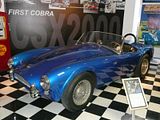
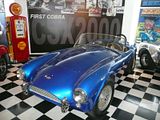 Dealers immediately put down deposits for the car, and the order book blossomed. Many wanted their cars for racing, so it was not long before larger engines were fitted, and other means were found of lightening the car, such as this hand-beaten aluminium body with no paint on it.
Dealers immediately put down deposits for the car, and the order book blossomed. Many wanted their cars for racing, so it was not long before larger engines were fitted, and other means were found of lightening the car, such as this hand-beaten aluminium body with no paint on it.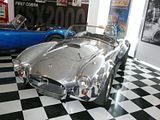
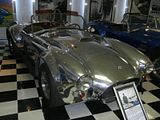 Although the last 427 cars were produced in May 1967, interest in the car remained phenomenal, and in the 1980s, production was restarted. These are recent versions of the legendary Cobra, now called the 427 S/C CSX 4000, still available today. These are the cheapest way of getting behind the wheel of a Shelby badged car.
Although the last 427 cars were produced in May 1967, interest in the car remained phenomenal, and in the 1980s, production was restarted. These are recent versions of the legendary Cobra, now called the 427 S/C CSX 4000, still available today. These are the cheapest way of getting behind the wheel of a Shelby badged car.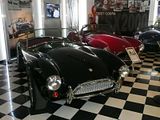
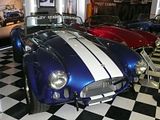
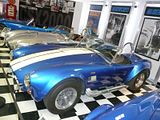
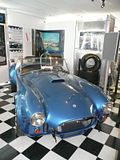
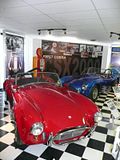
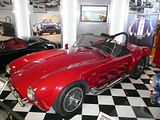
 Racing was still very much in Shelby’s blood, and he wanted to build a car to beat Ferrari. There was one problem, which was that to be allowed by the governing bodies even to enter a car, he had to have built a minimum number of cars which was something of a problem when his plan was to build a bespoke car for the track. Careful reading of the rules revealed that he could cite the use of the engines and chassis in his Cobra based sports cars as the proof needed for homologation. That was all he needed to set to work and produce a very different looking car, the Daytona Coupe, although it was based on the Cobra. The cars triumphed at races in 1963/64. Legend has it that the final race of the season was in Italy, and such was the sway that Ferrari had, they were able to convince the race organisers to cancel the race, so that their position as championship leaders was preserved. Shelby was furious! Anyway, this is a replica of the car. Back in 1963, just 6 of these cars were built, and 5 survive. This was indeed the only American made car to win the World Manufacturers Championship for Grand Touring race cars. These cars rarely come up for sale. The last time one did, it fetched very nearly $5m. The display car is a modern replica, and is one of the products that Shelby will make for you even now
Racing was still very much in Shelby’s blood, and he wanted to build a car to beat Ferrari. There was one problem, which was that to be allowed by the governing bodies even to enter a car, he had to have built a minimum number of cars which was something of a problem when his plan was to build a bespoke car for the track. Careful reading of the rules revealed that he could cite the use of the engines and chassis in his Cobra based sports cars as the proof needed for homologation. That was all he needed to set to work and produce a very different looking car, the Daytona Coupe, although it was based on the Cobra. The cars triumphed at races in 1963/64. Legend has it that the final race of the season was in Italy, and such was the sway that Ferrari had, they were able to convince the race organisers to cancel the race, so that their position as championship leaders was preserved. Shelby was furious! Anyway, this is a replica of the car. Back in 1963, just 6 of these cars were built, and 5 survive. This was indeed the only American made car to win the World Manufacturers Championship for Grand Touring race cars. These cars rarely come up for sale. The last time one did, it fetched very nearly $5m. The display car is a modern replica, and is one of the products that Shelby will make for you even now Shelby has had an association with the Mustang for almost as long as there have been Mustangs.In August 1964, only 4 months after the launch of the car, Ford asked Shelby to help to develop a high performance Mustang, initially for racing. The first car was called the Shelby GT350R, and it was not long before a road going version was also offered. The first cars were built in September that year, as 1965 models and were called the GT350. Much mystery surrounds the name GT350, and most people assume that it had something to do with the power output of the car, though this is incorrect. In fact, so the story, goes, having left a meeting and headed outside, Shelby was talking to an equally frustrated Ford Exec and they ended up speculating on the distance between two buildings, believing it to be 350 feet. For some reason, the number 350 stuck. and that is how the car got named. It’s a good story, whether it is true or not. And the GT500 name? Simply because the car was more powerful, it needed a bigger number and 500 sounded good!
Shelby has had an association with the Mustang for almost as long as there have been Mustangs.In August 1964, only 4 months after the launch of the car, Ford asked Shelby to help to develop a high performance Mustang, initially for racing. The first car was called the Shelby GT350R, and it was not long before a road going version was also offered. The first cars were built in September that year, as 1965 models and were called the GT350. Much mystery surrounds the name GT350, and most people assume that it had something to do with the power output of the car, though this is incorrect. In fact, so the story, goes, having left a meeting and headed outside, Shelby was talking to an equally frustrated Ford Exec and they ended up speculating on the distance between two buildings, believing it to be 350 feet. For some reason, the number 350 stuck. and that is how the car got named. It’s a good story, whether it is true or not. And the GT500 name? Simply because the car was more powerful, it needed a bigger number and 500 sounded good!
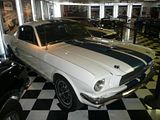
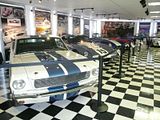 This is a 1966 Shelby, which was laid up for most of its life when the owner, who bought it to go racing, was injured, and he simply stored it in his garage. It has done a tiny mileage, and is largely original.
This is a 1966 Shelby, which was laid up for most of its life when the owner, who bought it to go racing, was injured, and he simply stored it in his garage. It has done a tiny mileage, and is largely original.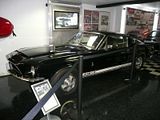 In 1966, Shelby completed an innovative deal with Hertz, offering genuine Shelby engineered cars so that Hertz could rent them out to their customers, who it was (correctly) believed would be prepared to pay to have something better than a standard Ford or Chevy. Hertz liked the prototype so much that they increased their initial order from 200 to 1000 cars. It is well known that many of these cars were raced, and treated very roughly,and there are many tales of how customers would swap out the parts and return the car with a stock V6 engine under the bonnet. Nonetheless, the PR benefits to Ford and to Hertz were huge. the cars were very distinctive. Although most were in black, with the gold stripe on them, a few were supplied in other colours. This is a 1966 Shelby GT350-H
In 1966, Shelby completed an innovative deal with Hertz, offering genuine Shelby engineered cars so that Hertz could rent them out to their customers, who it was (correctly) believed would be prepared to pay to have something better than a standard Ford or Chevy. Hertz liked the prototype so much that they increased their initial order from 200 to 1000 cars. It is well known that many of these cars were raced, and treated very roughly,and there are many tales of how customers would swap out the parts and return the car with a stock V6 engine under the bonnet. Nonetheless, the PR benefits to Ford and to Hertz were huge. the cars were very distinctive. Although most were in black, with the gold stripe on them, a few were supplied in other colours. This is a 1966 Shelby GT350-H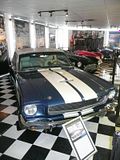 As the Mustang continued to evolve, so did the Shelby cars. This is a 1968 Shelby GT350.
As the Mustang continued to evolve, so did the Shelby cars. This is a 1968 Shelby GT350.
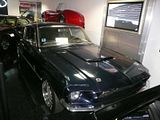
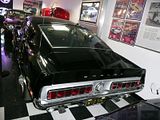
 This is one of the last of the Shelby GT500s, from 1969. Although the Shelbys had become something of an icon, demand dried up more or less overnight, so the last cars were upgraded to make them into 1970 models, in an effort to clear them.
This is one of the last of the Shelby GT500s, from 1969. Although the Shelbys had become something of an icon, demand dried up more or less overnight, so the last cars were upgraded to make them into 1970 models, in an effort to clear them. 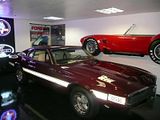
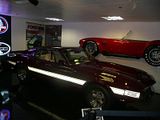

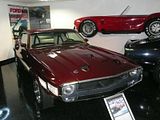 Ford ended their long term racing agreement with Shelby in March 1970 and later that year, Shelby Automotive Racing closed. However, that was not end of the story.
Ford ended their long term racing agreement with Shelby in March 1970 and later that year, Shelby Automotive Racing closed. However, that was not end of the story.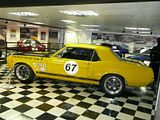 In 1982, Chrysler was in a desperate position. The now much derided K-cars had saved the company but more was needed. Lee Iaccoca was in charge, and he contacted his old friend Carrol Shelby, with whom he had worked when he was at Ford, on the Mustang deal, to see if Shelby could help to transform the image of the rather staid range of Chrysler products. This was a task which he relished . A number of examples of the results were on show:The first car to which Shelby turned his attention was the 1983 Charger. This is the prototype and is yet another that is the personal property of Carrol Shelby. Shelby focused on the engine and suspension, such that the 2.2 litre engine could power the car up to 120 mph with a 0- 60 time of 9 seconds. The handling of the car was transformed. Dealers loved it.
In 1982, Chrysler was in a desperate position. The now much derided K-cars had saved the company but more was needed. Lee Iaccoca was in charge, and he contacted his old friend Carrol Shelby, with whom he had worked when he was at Ford, on the Mustang deal, to see if Shelby could help to transform the image of the rather staid range of Chrysler products. This was a task which he relished . A number of examples of the results were on show:The first car to which Shelby turned his attention was the 1983 Charger. This is the prototype and is yet another that is the personal property of Carrol Shelby. Shelby focused on the engine and suspension, such that the 2.2 litre engine could power the car up to 120 mph with a 0- 60 time of 9 seconds. The handling of the car was transformed. Dealers loved it.
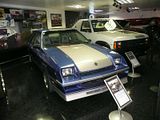
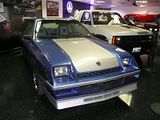 When production of the Charger ended in 1989, Shelby turned his attention to something more unlikely, the Dodge Dakota pickup truck, and here is one of the 1500 of those conversions. This version had a 5.2 litre V8, and lots of visual reminders that this was a Shelby. It was available in red or white.
When production of the Charger ended in 1989, Shelby turned his attention to something more unlikely, the Dodge Dakota pickup truck, and here is one of the 1500 of those conversions. This version had a 5.2 litre V8, and lots of visual reminders that this was a Shelby. It was available in red or white.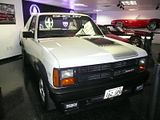
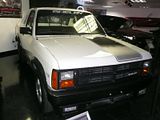 Equally unlikely a target was the humble Horizon. In 1984, Shelby had offered the GLH version, making the same sort of changes to this car as he had made to the Charger. In 1986, he produced the even wilder GLHS, which was a real blast to drive. GLH stands for “Goes Like Hell”, and the “S” either stands for “Some more” or “Shelby” depending on who you ask. The 2.2 litre engine had a turbo and intercooler fitted, meaning the car generated 175 bhp. Just 500 were built. This car has been loaned to the museum by an enthusiast who spotted that they did not have one in the collection.
Equally unlikely a target was the humble Horizon. In 1984, Shelby had offered the GLH version, making the same sort of changes to this car as he had made to the Charger. In 1986, he produced the even wilder GLHS, which was a real blast to drive. GLH stands for “Goes Like Hell”, and the “S” either stands for “Some more” or “Shelby” depending on who you ask. The 2.2 litre engine had a turbo and intercooler fitted, meaning the car generated 175 bhp. Just 500 were built. This car has been loaned to the museum by an enthusiast who spotted that they did not have one in the collection.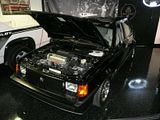
 Following on from the Horizon, Shelby turned his attention to the Lancer hatchback. The idea was to make this 1987 vehicle a strong competitor for the BMW 325i and other European compact cars. Boasting a 2.2 litre 4 cylinder engine that developed 175 bhp, and fitted with a number of luxury items such as leather seats, it was a brave effort, but it was not really a success. 780 of them were made.
Following on from the Horizon, Shelby turned his attention to the Lancer hatchback. The idea was to make this 1987 vehicle a strong competitor for the BMW 325i and other European compact cars. Boasting a 2.2 litre 4 cylinder engine that developed 175 bhp, and fitted with a number of luxury items such as leather seats, it was a brave effort, but it was not really a success. 780 of them were made.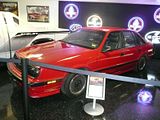
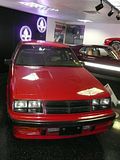 More recently, there was a diversion into designing and making his own sports car. The first car offered by Shelby with its own body design, the Shelby Series 1 was launched in 1998. The plan was to make 500 of these Shelby Series 1 sports cars. With their carbon fibre bodies, and excellent aerodynamics, these were fast vehicles, with a 0 – 60 time of less than 4 seconds. The Series 1 used a Corvette engine (duly enhanced by Shelby), and other ‘vette parts, such as the dash, and after 249 had been built, GM had a sense of humour failure and refused to supply any more parts. Rather than try to re-engineer the car so it could use Ford or Chrysler components, the decision was taken, reluctantly, to end production at this point.
More recently, there was a diversion into designing and making his own sports car. The first car offered by Shelby with its own body design, the Shelby Series 1 was launched in 1998. The plan was to make 500 of these Shelby Series 1 sports cars. With their carbon fibre bodies, and excellent aerodynamics, these were fast vehicles, with a 0 – 60 time of less than 4 seconds. The Series 1 used a Corvette engine (duly enhanced by Shelby), and other ‘vette parts, such as the dash, and after 249 had been built, GM had a sense of humour failure and refused to supply any more parts. Rather than try to re-engineer the car so it could use Ford or Chrysler components, the decision was taken, reluctantly, to end production at this point.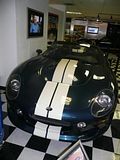
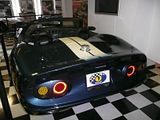
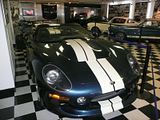
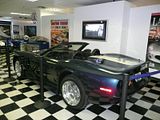 Shelby was also heavily involved in the Ford GT, and this is a prototype car, the one which was shown at the Auto Shows in late 2003 and early 2004. It does not have the cut-out doors into the roof, this feature was simply marked on with tape!
Shelby was also heavily involved in the Ford GT, and this is a prototype car, the one which was shown at the Auto Shows in late 2003 and early 2004. It does not have the cut-out doors into the roof, this feature was simply marked on with tape!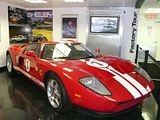
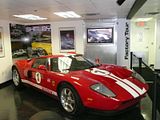 To celebrate Shelby’s 85th birthday, the current President of Shelby Automobiles commissioned the build of just 85 of the GT40 Commemorative Edition Cars, and this is the prototype.
To celebrate Shelby’s 85th birthday, the current President of Shelby Automobiles commissioned the build of just 85 of the GT40 Commemorative Edition Cars, and this is the prototype.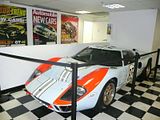
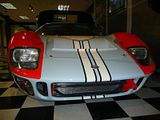 The latest cars from the Shelby factory are once again Mustangs:When Ford launched the current generation Mustang, in 2004, it was not long before Shelby had a go at “improving” it, and this is the concept that they came up with, the CSX6. They showed it to Ford, who were not convinced. It was based on the V6 car, and not the V8, and Ford were not convinced there was a market for such a vehicle. It did not take long before things changed, of course. .
The latest cars from the Shelby factory are once again Mustangs:When Ford launched the current generation Mustang, in 2004, it was not long before Shelby had a go at “improving” it, and this is the concept that they came up with, the CSX6. They showed it to Ford, who were not convinced. It was based on the V6 car, and not the V8, and Ford were not convinced there was a market for such a vehicle. It did not take long before things changed, of course. .
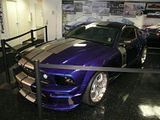
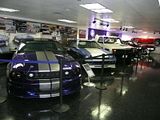 Mustang “KR” 550 – “King of the Road”
Mustang “KR” 550 – “King of the Road”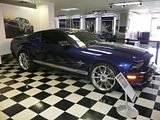
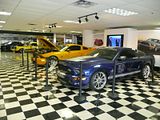 Mustang Super Snake – 721 bhp, Corvette eat your heart out!
Mustang Super Snake – 721 bhp, Corvette eat your heart out!
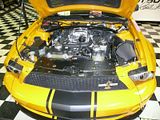
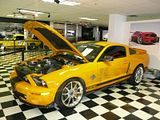 In 2006,to celebrate 40 years since the first Hertz Shelby Mustang. another deal was struck with Hertz. In the first year, 500 Coupes were produced, all but a few with an automatic gearbox, and all painted in black, with a gold stripe, just like the 1966 cars. In 2007, a batch of 500 convertibles were produced. To try to stop people from renting a car and taking it to their local track, you could only rent a car “out of state”, and Hertz were far more careful about ensuring that the cars did not get the Shelby parts removed, and checked the cars very carefully on rental and return. I know, as I rented a Coupe model back in June 2007. After active service in the Hertz fleet, the cars were all sold. This display vehicle is the prototype.
In 2006,to celebrate 40 years since the first Hertz Shelby Mustang. another deal was struck with Hertz. In the first year, 500 Coupes were produced, all but a few with an automatic gearbox, and all painted in black, with a gold stripe, just like the 1966 cars. In 2007, a batch of 500 convertibles were produced. To try to stop people from renting a car and taking it to their local track, you could only rent a car “out of state”, and Hertz were far more careful about ensuring that the cars did not get the Shelby parts removed, and checked the cars very carefully on rental and return. I know, as I rented a Coupe model back in June 2007. After active service in the Hertz fleet, the cars were all sold. This display vehicle is the prototype. 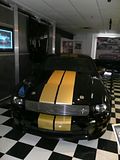
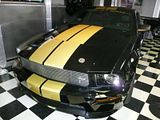 On my second visit, although many of the cars were as I had seen in June 2009, the latest cars were also on display, so I could see and learn about the latest Super Snake, with 800 bhp, and the 2012 model GT350, which is going to be limited to 350 cars, in red, white or blue, and coupe and convertible body styles.
On my second visit, although many of the cars were as I had seen in June 2009, the latest cars were also on display, so I could see and learn about the latest Super Snake, with 800 bhp, and the 2012 model GT350, which is going to be limited to 350 cars, in red, white or blue, and coupe and convertible body styles.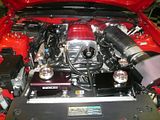
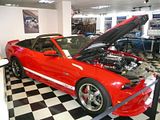
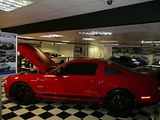
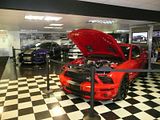
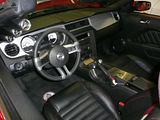
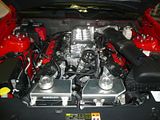

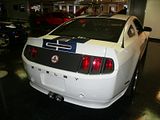
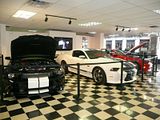
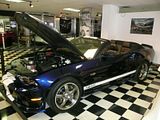
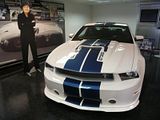

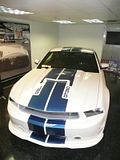 Forget the glitz and the brash neon of Las Vegas. This is where you need to get to in Nevada. It’s about 15 miles north of the city, literally a few hundred yards off freeway exit 54 of the I-15. You can find more details here: http://www.shelbyautos.com/index.asp2009-07-09 13:02:22
Forget the glitz and the brash neon of Las Vegas. This is where you need to get to in Nevada. It’s about 15 miles north of the city, literally a few hundred yards off freeway exit 54 of the I-15. You can find more details here: http://www.shelbyautos.com/index.asp2009-07-09 13:02:22

